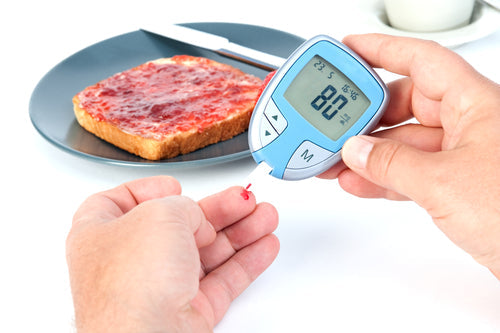
blog
|January 30, 2025
Share :
A test that could pause diabetes
By Mona Jauhar RDN,LD
A missing link or rather a glaring gap has come up in the way the medical world has handled diabetes all these years. It appears that long before your blood sugar rises, your insulin spikes. High insulin levels are the first sign that can precede type 2 diabetes by decades and damage begins with even slight changes in insulin and blood sugar. To forestall this blow, Functional medicine practitioners advocate the 2-Hour Insulin Glucose Challenge Test.
Insulin resistance
Insulin resistance doesn’t happen overnight. Since a majority of western diet includes empty calories, quickly absorbed sugars and carbohydrates like bread, pasta, rice, and potatoes, our cells slowly become resistant to the effects of insulin. The body increasingly demands more insulin to do the same job of keeping blood sugar even, eventually leading to insulin resistance. When cells become insulin resistant, sugar stays in the bloodstream, which can lead to high blood sugar and eventually serious lifestyle diseases.
Early detection is key
The symptoms of insulin resistance include central obesity, fatigue, sugar cravings, high triglycerides, low HDL, high blood pressure as well as increased inflammation. While these symptoms serve as helpful markers, they may surface after the problem has already gotten out of hand. Even without these warning signs, one test can determine high insulin levels years or even decades before diabetes develops. A two-hour glucose tolerance test can help detect high insulin levels. This test measures not only glucose but also insulin levels, yet doctors rarely recommend it. Instead, they usually don’t express concern until blood sugar is over 110 or worse, over 126, which is diabetes.
The parameters
The reading on your 2-Hour Insulin Glucose Challenge Test should be as follows: Your blood sugar levels should be less than 80 mg/dl fasting and never rise above 110 or 120 mg/dl after one and two hour checks. Your insulin should be less than 5 uIU/mL fasting and should never rise above 30 uIU/mL after one and two-hour checks. If your results show high insulin, you need to eliminate the things and habits that are causing the spike.
-
The low-carb, ketogenic diet: Practically any dietary intervention that results in weight loss, especially fat loss around the abdomen, can temporarily improve insulin sensitivity. Reducing your intake of sugar and carbs that digest to sugar will likely result in reduced insulin production and improved insulin resistance.
-
Remove added sugars: There’s a big difference between added sugars and natural sugars. Natural sugars are found in sources like plants and vegetables, both of which provide lots of other nutrients. Conversely, added sugars are found in more highly processed foods, namely high-fructose corn syrup and table sugar, also known as sucrose. Many studies have found that higher intakes of fructose can increase insulin resistance among people with diabetes. Give up sugar but also stevia, aspartame, sucralose, sugar alcohols like xylitol and maltitol, and all of the other heavily used and marketed sweeteners unless you want to slow down your metabolism, gain weight, and increase insulin resistance.
-
Eat whole, fresh and fiber foods: Studies show high-fiber foods can be as effective as diabetes medications to lower blood sugar without the side effects. Choose low-glycemic real foods including fresh vegetables, fruits, legumes, non-gluten grains, nuts, seeds, and high-quality animal protein.
-
Eat anti inflammatory foods: Dietary sugars and refined vegetable oils are the biggest contributors to inflammation and increased insulin levels. Incorporate plenty of anti-inflammatory foods including wild-caught fish, freshly ground flax seed, and fish oil.
-
De stress and sleep: Increased cortisol levels elevate blood sugar and promote the accumulation of belly fat that is commonly seen in patients with insulin resistance or diabetes. Managing stress goes a long way in balancing blood sugar and insulin levels as does sleeping well every night.
-
Address nutritional deficiencies: Many different supplements may increase insulin sensitivity, but chromium, berberine, magnesium and resveratrol are backed by the most consistent evidence.
-
Physical activity and exercise: Muscles burn glucose for energy. The more you move, the more glucose your muscles take out of the blood for energy use, which helps to lower your blood sugar levels. This allows for a reduction in insulin secretion, lessening the burden on your pancreas. Based on evidence, it appears that the combination of regular exercise and a well formulated low-carb diet is an effective approach for treating insulin resistance and hyperinsulinemia.
Studies:
-
Sucralose affects glycemic and hormonal responses to an oral glucose load. https://pubmed.ncbi.nlm.nih.gov/23633524/
-
A single night of partial sleep deprivation induces insulin resistance in multiple metabolic pathways in healthy subjects. https://pubmed.ncbi.nlm.nih.gov/20371664/
3. High-Intensity Intermittent Exercise and Fat Loss. https://www.ncbi.nlm.nih.gov/pmc/articles/PMC2991639/






